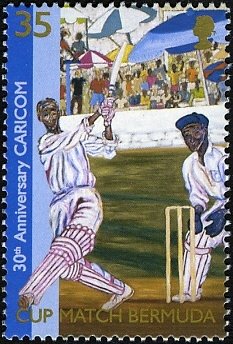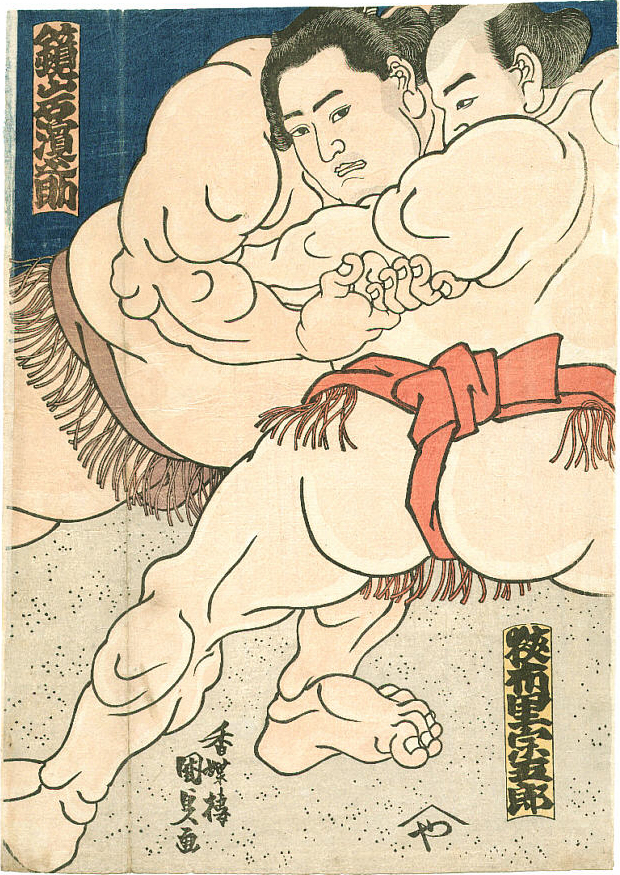Stamp: Batsman and wicketkeeper (Bermuda 2003)
Batsman and wicketkeeper (Bermuda 2003)
04 July (Bermuda ) within release Cricket Cup Match with ""30th Anniversary CARICOM"" goes into circulation Stamp Batsman and wicketkeeper face value 35 Bermudian cent
| Stamp Batsman and wicketkeeper in catalogues | |
|---|---|
| Stamp Number: | Sn:BM 870 |
Stamp is square format.
Watermark 373, Cricket Cup Match with ""30th Anniversary CARICOM"" Added at LeftAlso in the issue Cricket Cup Match with ""30th Anniversary CARICOM"":
- Stamp - Umpire and fielder face value 35;
- Stamp - Batsman and wicketkeeper face value 35;
|
Data entry completed
53%
|
|
|---|---|
| Stamp Batsman and wicketkeeper in digits | |
| Country: | Bermuda |
| Date: | 2003-07-04 |
| Perforation: | 14 |
| Emission: | Commemorative |
| Format: | Stamp |
| Face Value: | 35 Bermudian cent |
Stamp Batsman and wicketkeeper it reflects the thematic directions:
Sports, are all usually forms of competitive physical activity or games which, through casual or organised participation, aim to use, maintain or improve physical ability and skills while providing enjoyment to participants, and in some cases, entertainment for spectators. Usually the contest or game is between two sides, each attempting to exceed the other. Some sports allow a tie game; others provide tie-breaking methods, to ensure one winner and one loser. A number of such two-sided contests may be arranged in a tournament producing a champion. Many sports leagues make an annual champion by arranging games in a regular sports season, followed in some cases by playoffs. Hundreds of sports exist, from those between single contestants, through to those with hundreds of simultaneous participants, either in teams or competing as individuals. In certain sports such as racing, many contestants may compete, each against each other, with one winner.
Painting is the practice of applying paint, pigment, color or other medium to a solid surface (support base). The medium is commonly applied to the base with a brush, but other implements, such as knives, sponges, and airbrushes, can be used. Painting is a mode of creative expression, and the forms are numerous. Drawing, gesture (as in gestural painting), composition, narration (as in narrative art), or abstraction (as in abstract art), among other aesthetic modes, may serve to manifest the expressive and conceptual intention of the practitioner. Paintings can be naturalistic and representational (as in a still life or landscape painting), photographic, abstract, narrative, symbolistic (as in Symbolist art), emotive (as in Expressionism), or political in nature (as in Artivism). A portion of the history of painting in both Eastern and Western art is dominated by spiritual motifs and ideas. Examples of this kind of painting range from artwork depicting mythological figures on pottery, to Biblical scenes rendered on the interior walls and ceiling of the Sistine Chapel, to scenes from the life of Buddha or other images of Eastern religious origin. In art, the term painting describes both the act and the result of the action. The support for paintings includes such surfaces as walls, paper, canvas, wood, glass, lacquer, clay, leaf, copper and concrete, and the painting may incorporate multiple other materials including sand, clay, paper, plaster, gold leaf, as well as objects. The term painting is also used outside of art as a common trade among craftsmen and builders.


